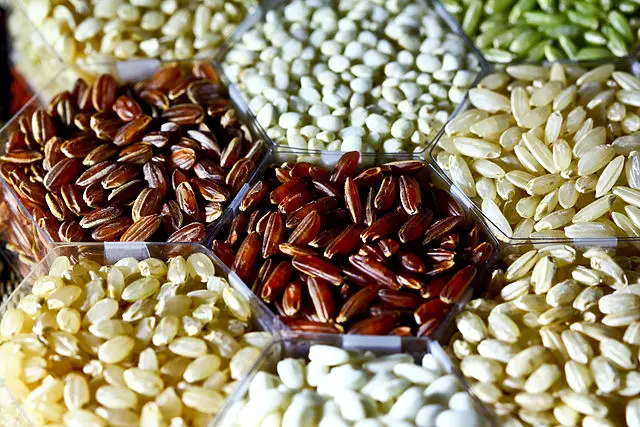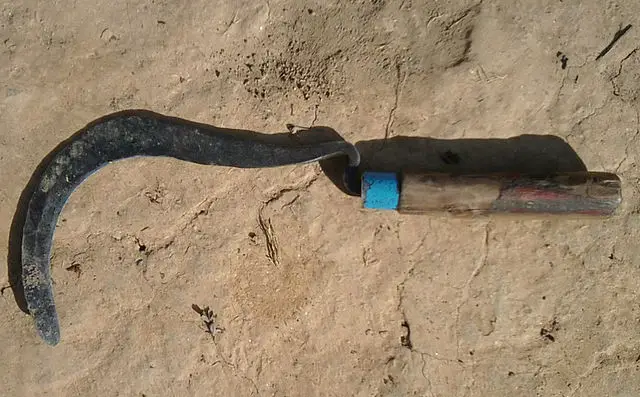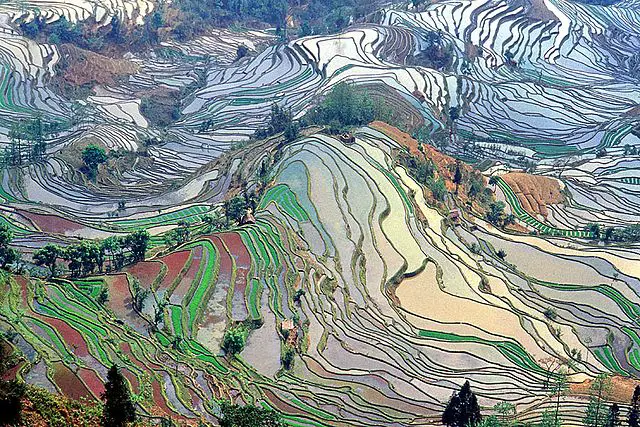Farming was essential to life in Ancient China. Most people were farmers and very few people were noblemen and kings.
During the Spring and Autumn Period (771- 476 BC) and the Warring States Period (475 -221 BC), farming became very sophisticated.
Farming made life easier because people did not need to go and hunt.
Crops
Rice grew in all stagnant (still) waters. Rice has been grown in China for over 9000 years. China produces the most rice in the whole world.
To grow rice, you need fields flooded with water. These can either occur naturally or through man-made irrigation (water network) systems.
These fields are called rice paddies.
The Ancient Chinese farmers flooded the fields and made rice paddies. Rice could not really grow too far north because it was not warm enough.

Archaeologists have found tools that would have perhaps been used for growing millet and rice in the Palaeolithic period (2.6 million years ago!)
Farmers also grew wheat and millet. Millet is a short-grained cereal. Millet is boiled to make porridge. It does not need a lot of water to grow so it grew well in the north where it is drier and colder.
There is evidence that millet was grown from around 6250 to 5050 BC.
There were two types of wheat. Spring wheat was planted in spring and winter wheat was harvested in autumn. People also grew vegetables in garden plots.
They would have grown melons, fruit trees and cucumber.
The fruit trees would have had oranges, pomelos, dates and chestnuts on them. The most important tree was the mulberry tree. Mulberries were the main food silkworms ate.
The Ancient Chinese people were very clever because they domesticated the silkworm (it was not wild anymore).
The silkworm produced a fibre that was woven into silk. Chinese people were the first people to know how to use the threads produced by silkworms to weave silk.
Tools
Before the Iron Age, Chinese farmers used wooden hand ploughs. These were difficult to use and could not cut through hard soil. It was very hard work and the Chinese farmer would need to press in the plough with his foot while gripping the plough with his hand.
It became much easier to farm after the iron plough was invented. Farmers no longer needed to dig in hard with a wooden plough using their feet.
After this, strong animals called oxen pulled the plough. Lands that were previously too difficult to plough could now be used to farm on.

Watering the crops also improved over time. Canals were developed and these provided water networks for watering crops (irrigation).
During the Warring States Period (403-221 BC), Li Bing created the Du Jiang Yan Irrigation System for the State of Qin.
Developments in farming technology spread around the country through trade routes, like the Silk Road.
By the time of the Tang Dynasty (618-907), farming was similar all over China because all these new technologies and techniques had spread.

Migration
The ability to farm and the availability of land sometimes influenced people to move homes.
In the year 750, most of the population lived north of the Yangtze River but by 1250, most of the population lived below it.
This is because rice could grow very quickly in the south. When people move like this within a country, it is called internal migration.
Internal migration often happens at various times in a country’s history because people move to the areas with better food or farming, or to places with more jobs and opportunities.